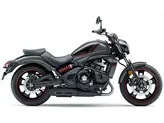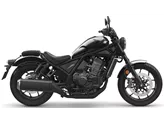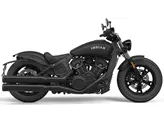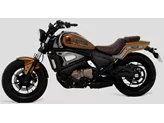Harley-Davidson Street Rod 2017 vs. Kawasaki Vulcan S 2020

Harley-Davidson Street Rod 2017

Kawasaki Vulcan S 2020
Overview - Harley-Davidson Street Rod 2017 vs Kawasaki Vulcan S 2020
The Harley-Davidson Street Rod 2017 and the Kawasaki Vulcan S 2020 are both chopper/cruiser motorcycles that offer unique features and characteristics.
Starting with the technical specifications, the Harley-Davidson Street Rod 2017 is equipped with a V-twin engine, while the Kawasaki Vulcan S 2020 features an in-line engine. The Street Rod has a slightly larger bore of 85mm compared to the Vulcan S's 83mm, which may result in a slightly higher power output. However, the Vulcan S has a larger displacement of 649ccm compared to the Street Rod's 749ccm. In terms of power, the Street Rod produces 71 HP, while the Vulcan S generates 61 HP. The torque figures are also close, with the Street Rod offering 65 Nm and the Vulcan S providing 63 Nm. Both motorcycles have liquid cooling systems to ensure optimal engine performance.
When it comes to the chassis, both bikes feature a steel frame. However, the Street Rod has a double cradle frame, while the Vulcan S has a perimeter frame. This difference in frame design may result in variations in handling and stability.

Harley-Davidson Street Rod 2017
In terms of braking, the Street Rod is equipped with double disc brakes at the front, while the Vulcan S has a single disc brake. This may affect the braking performance and stopping power of the two motorcycles.
In terms of dimensions and weights, the Street Rod has a front tire width of 120mm and a rear tire width of 160mm, both with a diameter of 17 inches. On the other hand, the Vulcan S has a front tire width of 120mm with an 18-inch diameter, and a rear tire width of 160mm with a 17-inch diameter. The wheelbase of the Street Rod is 1510mm, while the Vulcan S has a longer wheelbase of 1575mm. The seat height of the Street Rod is 765mm, while the Vulcan S offers a lower seat height of 705mm. Both motorcycles have a fuel tank capacity of around 13-14 liters.

Kawasaki Vulcan S 2020
Now let's discuss the strengths and weaknesses of each motorcycle. The Street Rod's strengths include its cool Harley-Davidson look, good workmanship, banging exhaust, and small turning circle. On the other hand, its weaknesses lie in its soft brake and choppy gearbox.
The Vulcan S, on the other hand, boasts a powerful engine, chassis tuning with sporty Kawasaki DNA, a real cruiser seating position, an easy-to-read display, and potential in tuning. However, it has some weaknesses, including an appearance that may be considered a little outdated and moderate wind protection.
In conclusion, both the Harley-Davidson Street Rod 2017 and the Kawasaki Vulcan S 2020 have their own unique features and strengths. The Street Rod offers a classic Harley-Davidson look and good workmanship, while the Vulcan S provides a powerful engine and sporty DNA. Ultimately, the choice between the two will depend on personal preferences and priorities.
Technical Specifications Harley-Davidson Street Rod 2017 compared to Kawasaki Vulcan S 2020
Pros and Cons in comparison
Pros and Cons in comparison
Harley-Davidson Street Rod 2017

The Harley Davidson Street Rod is a motorbike for all those who want to become part of a traditional brand with little money. It also cuts a fine figure in the city, with a turning circle that some naked bikes could learn from. At the same time, it is ideal for anyone who wants a cool Harley look with sporty handling and more lean angle freedom. Only the soft brake and the hard-to-find idle depress the fun that the Street Rod brings even in winding terrain.
Kawasaki Vulcan S 2020

No matter which platform Kawasaki puts the 650 cubic two-cylinder in, the result is always a great motorbike! Even though the engine is unusually rev-happy for a cruiser, it results in a cruiser that actually qualifies as a sports cruiser when paired with the sporty chassis set-up. The only brake is the limited lean angle clearance, but this will not deter lovers of hearty footrest grinding. With such a good bike, we hope that Kawasaki will follow suit - after all, the Vulcan S has been with us almost unchanged since 2015.
Price Comparison Avarage Market Price Harley-Davidson Street Rod vs Kawasaki Vulcan S
There are a few key differences between a Harley-Davidson Street Rod 2017 and a Kawasaki Vulcan S 2020. In terms of price, the actual average prices of both motorbikes are almost the same. Compared to Kawasaki Vulcan S 2020 there are less Harley-Davidson Street Rod 2017 bikes available on the 1000PS.de Marketplace, specifically 6 compared to 15. It takes less time to sell a Kawasaki Vulcan S with 92 days compared to 122 days for the Harley-Davidson Street Rod. Since model year 2017 1000PS.de editors have written 3 reviews for the Harley-Davidson Street Rod and 13 reviews for the Kawasaki Vulcan S since model year 2015. The first review for the Harley-Davidson Street Rod was published on 09/03/2017 and now has more than 37,700 views. This compares to more than 14,800 views for the first review on Kawasaki Vulcan S published on 16/10/2014.


























